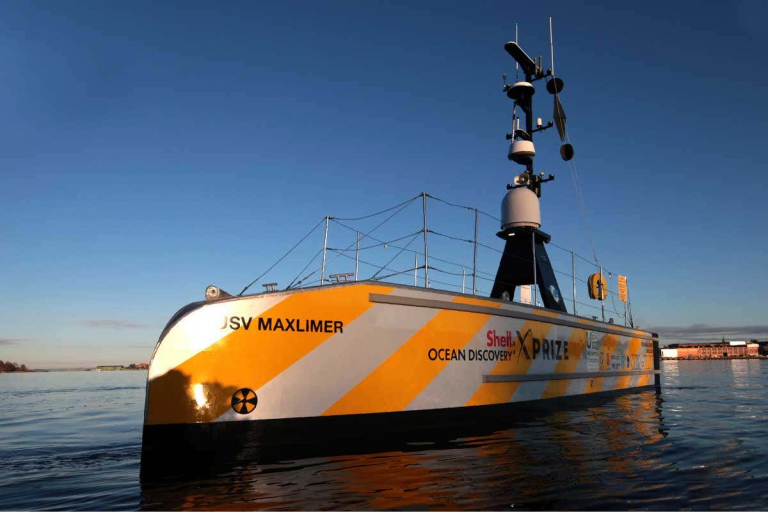
It started with unmanned aircrafts, then cars, and now there is a ship. The 36-foot long Maxilimer colorfully cruised its way through UK waters in its quest to be the first Unmanned Surface Vessel (USV), to cross the Atlantic.
The makers, SEA-KIT, a maritime company based in southeast London is looking for alternative to the expensive manned water vessels, that could significantly cut the cost of sea haulage. So came the birth of Maxilimer, with no need for a human function, a lot of ‘would be’ crew space is dedicated to equipment, increasing the efficiency of its robotic mechanism.
The journey started in 2016, when SEA-KIT collaborated with a UK ship builder to develop the aluminum for Maxilimer. A Norwegian firm provided the remote control tech so that it could heed the signals of GPs and be controlled from miles away using radio.
Register for Tekedia Mini-MBA edition 19 (Feb 9 – May 2, 2026): big discounts for early bird.
Tekedia AI in Business Masterclass opens registrations.
Join Tekedia Capital Syndicate and co-invest in great global startups.
Register for Tekedia AI Lab: From Technical Design to Deployment (next edition begins Jan 24 2026).
Cruising at eight miles per hour, Maxilimer can go on a nine months stretch unless it runs out of fuel. Its adaptability has enabled the flexibility in its functions, a mechanism that regular vessels lack. According to the managing director of SEA_KIT, Ben Simpson:
“It’s robust, it’s adaptable, it’s got a huge range.” The “no human crew” technique has created a big room inside that it can take 2 ½ tons of cargo. Another aspect of it that has caught the interest of clients is its cost, it’s cheap. Simpson said:
“SEA-KIT vessels use less than five percent of the fuel required to operate a standard ocean-going vessels.” And there is environmental benefit attached to its cheap operational cost. SEA-KIT’s chief operating officer, Neil Tinmouth, told the DailyBeast:
“This is the game changer when it comes to the carbon footprint and environmental impact of these operations.”
Maxilimer was launched in 2017, and for about 2 years was in the waters being tested. Its performance so far has been satisfying that it won the $7 million Shell ocean Discovery X-Prize, in May, for the best ocean-mapping technology.
The maritime world is keenly observing the progress of Maxilimer, the final test is to make it across the Atlantic. If it succeeds, it will kick off a tech precedent that will save companies a fortune, and the environment, pollution. The US Navy are already exploring technology to develop AI vessels, and oil companies are looking for cheap alternative to their high cost maritime operations.
And there is a need for machines to take human’s place in cleaning of oil spillage, to eliminate the harm from fume inhalation. The concern of regulators has been the efficiency of the Maxilimer. An instance of collision or any other sort of accident will mean disapproval by regulators.
So far, there has been no such record. The 2017 test-sail is set to be complete by 2020, and the success will mean duplication of the expertise and multiplication of the technology.



